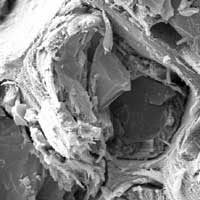 Researchers have captured the visible nanostructure of living wood for the first time using an advanced low-temperature scanning electron microscope.
Researchers have captured the visible nanostructure of living wood for the first time using an advanced low-temperature scanning electron microscope.
Tuesday, October 22, 2019
Revealing the nanostructure of wood could help raise height limits for wooden skyscrapers
 Researchers have captured the visible nanostructure of living wood for the first time using an advanced low-temperature scanning electron microscope.
Researchers have captured the visible nanostructure of living wood for the first time using an advanced low-temperature scanning electron microscope.
Magnetics with a twist: Scientists find new way to image spins
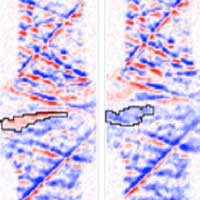 Researchers have put a new spin on measuring and controlling spins in nickel oxide, with an eye toward improving electronic devices? speed and memory capacity.
Researchers have put a new spin on measuring and controlling spins in nickel oxide, with an eye toward improving electronic devices? speed and memory capacity.
'Artificial leaf' successfully produces clean gas
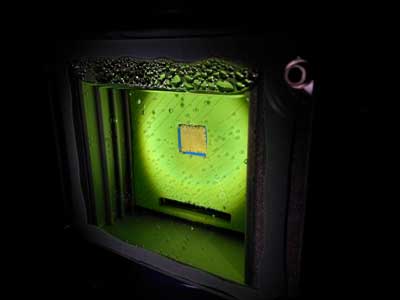 A widely-used gas that is currently produced from fossil fuels can instead be made by an 'artificial leaf' that uses only sunlight, carbon dioxide and water, and which could eventually be used to develop a sustainable liquid fuel alternative to petrol.
A widely-used gas that is currently produced from fossil fuels can instead be made by an 'artificial leaf' that uses only sunlight, carbon dioxide and water, and which could eventually be used to develop a sustainable liquid fuel alternative to petrol.
Biological material boosts perovskite solar cell performance
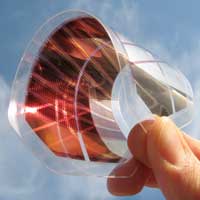 Next-generation solar cells that mimic photosynthesis with biological material may give new meaning to the term 'green technology'. Adding the protein bacteriorhodopsin to perovskite solar cells boosted the efficiency of the devices in a series of laboratory tests, according to an international team of researchers.
Next-generation solar cells that mimic photosynthesis with biological material may give new meaning to the term 'green technology'. Adding the protein bacteriorhodopsin to perovskite solar cells boosted the efficiency of the devices in a series of laboratory tests, according to an international team of researchers.
Neural network technique identifies mechanisms of ferroelectric switching
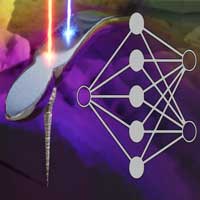 AI reveals domain-geometry-driven differences in ferroelectric switching, important for next-generation computing; approach could be applied to electron microscopy, agriculture, astronomy and other systems mapped through hyperspectral imaging.
AI reveals domain-geometry-driven differences in ferroelectric switching, important for next-generation computing; approach could be applied to electron microscopy, agriculture, astronomy and other systems mapped through hyperspectral imaging.
Unique properties of quantum material explained for first time
 Scientists have determined characteristics of a new, iron-containing type of material that is thought to have future applications in nanotechnology and spintronics.
Scientists have determined characteristics of a new, iron-containing type of material that is thought to have future applications in nanotechnology and spintronics.
Porous polymer coatings dynamically control light and heat
 New inexpensive, scalable design takes advantage of the optical switchability of porous polymers; could be used for heating, cooling, and lighting buildings, as well as camouflage applications.
New inexpensive, scalable design takes advantage of the optical switchability of porous polymers; could be used for heating, cooling, and lighting buildings, as well as camouflage applications.
Kirigami inspires new method for wearable sensors
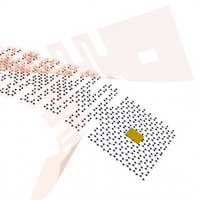 As wearable sensors become more prevalent, the need for a material resistant to damage from the stress and strains of the human body's natural movement becomes ever more crucial. To that end, researchers have developed a method of adopting kirigami architectures to help materials become more strain tolerant and more adaptable to movement.
As wearable sensors become more prevalent, the need for a material resistant to damage from the stress and strains of the human body's natural movement becomes ever more crucial. To that end, researchers have developed a method of adopting kirigami architectures to help materials become more strain tolerant and more adaptable to movement.
Fragmented magnetism
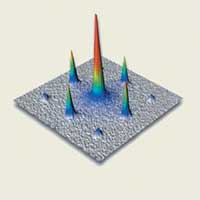 Spin-polarizing scanning tunneling microscopy allowed researchers to detect an elusive atomic-scale magnetic signal in a Mott insulator.
Spin-polarizing scanning tunneling microscopy allowed researchers to detect an elusive atomic-scale magnetic signal in a Mott insulator.
Subscribe to:
Comments (Atom)
